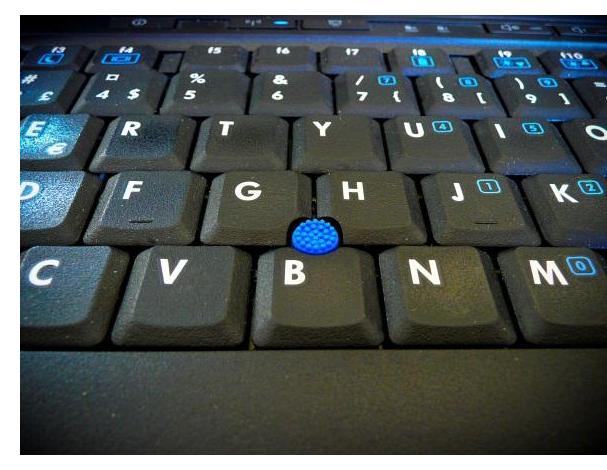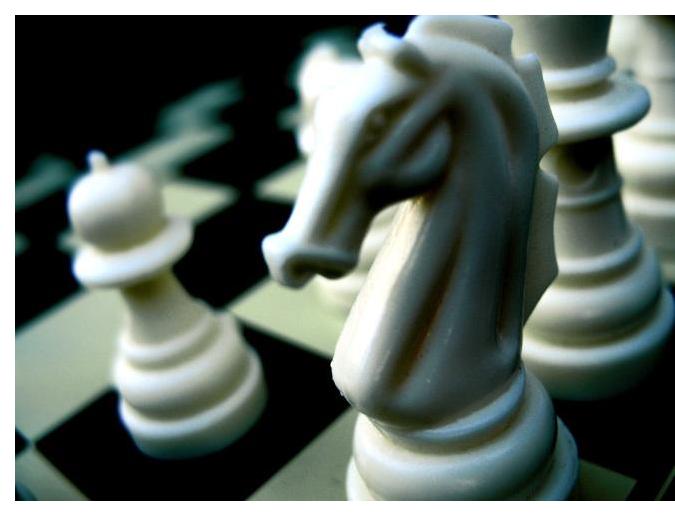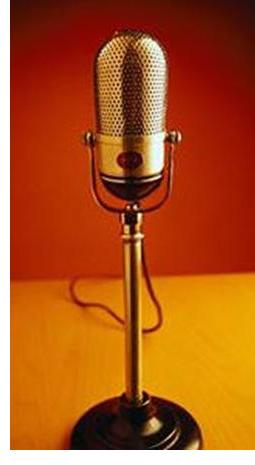Make Your Next Data Mining Presentation Twice As Good As Your Last
By Tim Graettinger
Have you ever listened to a really poor data mining presentation? Have you ever given one? You are not alone. I’ve certainly been on both sides. Think back for a moment. What made it so poor? Was it a lifeless deck with slide after slide of bullet after bullet of statistic after statistic? Or was the presenter lifeless, literally just reading the slides.
Books like “Presentation Zen” and “slide:ology” have already received a lot of attention, and rightly so [f1]. In a world filled with mediocre presentations, they provide a different mindset and a different approach to designing a deck of slides. For this article, we will focus on delivery. By the time you finish reading, you will pick up five crucial delivery tools that will make your next presentation twice as good as your last.
Use the “B” button
Presentation software like Microsoft PowerPoint has a dazzling array of features. You can animate your slides, add video clips, and do exotic transitions. For my money, though, one of the most valuable features is one of the simplest. But it is relatively unknown and unused by most presenters.  It’s the “B” button. When you’re presenting in “slide show” mode, hitting the “B” button on the keyboard blanks the screen. Hitting it again brings back the current slide.
It’s the “B” button. When you’re presenting in “slide show” mode, hitting the “B” button on the keyboard blanks the screen. Hitting it again brings back the current slide.
Using the “B” button allows you to change your audience’s focus, either towards you or towards your slides. This automatically makes your presentation better and more memorable since you are not constantly competing for attention against your slides. And it’s the change in focus that is significant, and people will notice immediately [f2].
If you present frequently, get a remote clicker that has a “B” button [f3]. These clickers are relatively inexpensive and wireless. You will have more freedom of movement, letting you interact more closely with your audience. Be aware that when you use the "B" button, you really need to know your content. You can’t use your slides as a crutch – but that’s a real plus.
Bonus tip: Do NOT provide your slides as a handout. It’s another opportunity to lose the attention of your audience. If they’re reading the handout, they’re not listening to you. When you need to document the findings from your data mining effort, write a document. When you need to do a presentation, do a presentation. One is not a substitute for the other.
Rehearse – Out Loud Ever attend a presentation where it felt like the presenter was seeing the slides for the first time, too? To me, rehearsal seems greatly undervalued by presenters. There are a lot of benefits to rehearsing – and that means out loud [f4]:
Ever attend a presentation where it felt like the presenter was seeing the slides for the first time, too? To me, rehearsal seems greatly undervalued by presenters. There are a lot of benefits to rehearsing – and that means out loud [f4]:
- You get to know your content, and it gets to know you. That is, through rehearsal, you work with your content to adapt it to your style, your delivery, and your manner of speaking. You want your words and phrases to sound conversational - not like they were written for a novel (“And then I endeavored to ….” You don’t talk like that).
- You can practice varying your speed, volume, pitch, and cadence. Again, similar to using the “B” button, it’s the changes in delivery that keep your audience interested and engaged. Practicing aloud helps you hear those times in your presentation when a change in voice will be most effective.
Here’s what I do:
- I reserve (for myself) the conference room where I’ll be presenting. Becoming familiar with your setting is really helpful.
- I videorecord myself rehearsing. It’s painful, at first, to watch yourself on video. But the discomfort fades quickly, and the value is tremendous. You see your distracting mannerisms. You hear your ums and ahs. If you can’t see a problem, you can’t fix it. Video helps you see.
Bonus tip: Practice starting from various points in your presentation. This helps you easily pick up following a question or other interruption. Conversely, if you always start from the top (and get interrupted by phone calls, meetings, etc.), the opening of your speech will get the most rehearsal time, and your closing will get the least. Your closing needs at least as much rehearsal as your opening, if not more.
Do Q&A Before You Close When do you ask for questions when you give a presentation? Most presenters leave Q&A for the very end. I did it countless times myself – but not anymore. Why? There’s a serious drawback to closing with Q&A. Imagine this: You just gave a dynamite presentation. You finish by asking if anyone has any questions. A few hands go up, and you easily respond to the first couple of them. Then, the last questioner throws out a weird, off-the-wall query. It deflates the whole room. Your presentation was great, but this wacky question was the last thing people had on their mind as they walked out the door. That’s the problem with doing Q&A at the very end. You give up your power as a presenter. You can’t let that happen. Instead, you want to end your talk the way YOU want it to end – with a strong closing. You want people to remember your call to action when they walk out the door.
When do you ask for questions when you give a presentation? Most presenters leave Q&A for the very end. I did it countless times myself – but not anymore. Why? There’s a serious drawback to closing with Q&A. Imagine this: You just gave a dynamite presentation. You finish by asking if anyone has any questions. A few hands go up, and you easily respond to the first couple of them. Then, the last questioner throws out a weird, off-the-wall query. It deflates the whole room. Your presentation was great, but this wacky question was the last thing people had on their mind as they walked out the door. That’s the problem with doing Q&A at the very end. You give up your power as a presenter. You can’t let that happen. Instead, you want to end your talk the way YOU want it to end – with a strong closing. You want people to remember your call to action when they walk out the door.
Here’s what I have found to be most effective for me. I say:
“I’ll take 2 or 3 questions from the group, and then I’ll wrap up my talk. So that several people get a chance, please keep your questions brief and to the point. With that, what questions do you have?”
Use wording for the above that feels comfortable to you, but there are several key components that you will want to keep. They are:
- First, signal that you are getting near to the end of your presentation, but you’re not finished yet.
- Next, indicate how many questions you intend to take (“I’ll take 2 or 3 questions…”). This lets you set expectations with your audience and demonstrates good time management.
- Finally, do NOT ask, “Do you have any questions?” to which people might not respond. Rather, use an open-ended statement, like “What questions do you have?” which is much more inviting.
Now, you can follow the Q&A session with your strong closing and call to action. Now, you can bury any oddball questions. Now, your message with be on the minds of your audience when they walk out the door.
Move - with a Purpose
Have you ever felt uncomfortable standing in front of a group? Do you anchor yourself in place like a refrigerator? Or do you pace back-and-forth like a caged animal?  In this section, you’ll learn the principles you need to move with a purpose when you present.
In this section, you’ll learn the principles you need to move with a purpose when you present.
I occasionally act in local community theater productions. My first acting teacher told me, “There are only two reasons to move on stage: to do a task, or to show emotion.” Let’s focus on the first of these – to do a task. A common example of a task is doing a demonstration. I often demonstrate how pieces of the data mining process connect, so I will move across the stage [f5] as I talk. This allows me to accomplish two things:
- I can show forward progress as the process moves along. Important note: Move from your audience’s left to their right. If you don’t, people will be confused.
- I can establish a mental link for the audience between parts of the process and spots on the floor (e.g., audience left can be framing the business problem, and audience right can be model deployment, with various stops in between). Later in the talk, I can point to various points on the stage to call back to parts of the process.
The second reason to move on stage is to show emotion. Remember that in presenting, you are often telling a story. That's how you're really connecting with your audience. But, as Craig Valentine – a World Champion of Public Speaking – says, “don't just tell or retell the story, relive it - with us”. And in reliving the story, bring the emotions. Let your actions and gestures be the ones you genuinely had during the experience. Were you happy, or mad, or sad? Show your audience how you felt. When you're honestly feeling the emotion, do you have to think about what gestures to use? Of course not. Your gestures will feel natural, they will be natural, and they WILL connect with your audience -- guaranteed.
The unsaid part of the actor’s rule is: if you’re not doing a task or showing emotion, stay put. This applies especially to your hands. Hands can be useful to direct people’s attention (which is an important task). But constant hand motion can be very distracting. Quick tip: use an open hand when gesturing. Finger-pointing often comes off as aggressive, while the open hand is inviting, non-threatening.
 Join a Toastmasters Club
Join a Toastmasters Club
Several years ago, I had an opportunity to begin doing predictive analytics/data mining training regularly again. As I began to prepare for the first course, I felt a bit rusty. I did some poking around online and found a local Toastmasters [f6] club. It was just what I needed. Here’s why. At a Toastmasters club, you can:
- Practice in front of a live audience. It’s low-pressure since none of the members are your customers, your boss, or your boss’s boss.
- Get immediate feedback. Another club member will evaluate your presentation. Unlike a professional presentation where you typically get either no feedback or negative feedback, a Toastmasters evaluation is positive, encouraging, and filled with constructive comments to help you improve.
- Learn impromptu speaking skills. A portion of every Toastmasters meeting is devoted to impromptu speaking. If you’re like me, you’ll find this practice invaluable for handling Q&A during a presentation or a training class, or just for casual conversations with your peers or boss.
To find a club in your area, see http://www.toastmasters.org/ .
Wrap-Up
In this article, you picked up five crucial presentation delivery tools:
- Use the “B” button to blank/un-blank the slide show.
- Rehearse out loud to internalize your content and message.
- Ask for questions before you close your presentation.
- Move with purpose to do a task or show emotion.
- Join a Toastmasters club to practice and get feedback.
If you use these tips well, your next data mining presentation will be twice as good as your last!
Recommended Resources [f7]:
“Presentation Zen: Simple Ideas on Presentation Design and Delivery”, by Garr Reynolds
“slide:ology – the art and science of creating great presentations”, by Nancy Duarte
“World Class Speaking: The Ultimate Guide to Presenting, Marketing, and Profiting like a Champion”, by Craig Valentine and Mitch Meyerson
“The Presentation Secrets of Steve Jobs: How to Be Insanely Great in Front of Any Audience”, by Carmine Gallo.
See more Discovery Corps Articles
Tim Graettinger, Ph.D., is the President of Discovery Corps, Inc., a Pittsburgh-area company specializing in data mining, visualization, and predictive analytics. Read more about Tim.
Your comments and questions about this article are welcome. Please contact Tim at (724)-743-3642 or tgraettinger@discoverycorpsinc.com
__footnotes______________
1 For more resources, see the “Recommended Reading” section at the end of the article.
2 In fact, be prepared for people in your audience to jump to your aid, thinking the projector bulb has failed. Once you explain that you blanked the screen on purpose, they’ll immediately want to know how you did it.
3 You can always simply use the “B” button on your laptop keyboard if you don’t invest in a remote clicker.
4 Reading your slides with your eyes is not a rehearsal.
5 My stage is often simply the front of the room.
6 Toastmasters is an international speaking and leadership organization that was founded in 1924. The organization has more than 280,000 members in 13,500 clubs in 116 countries.
7 All of these resources are currently sitting on my shelves.
© 2012, Discovery Corps, Inc.

